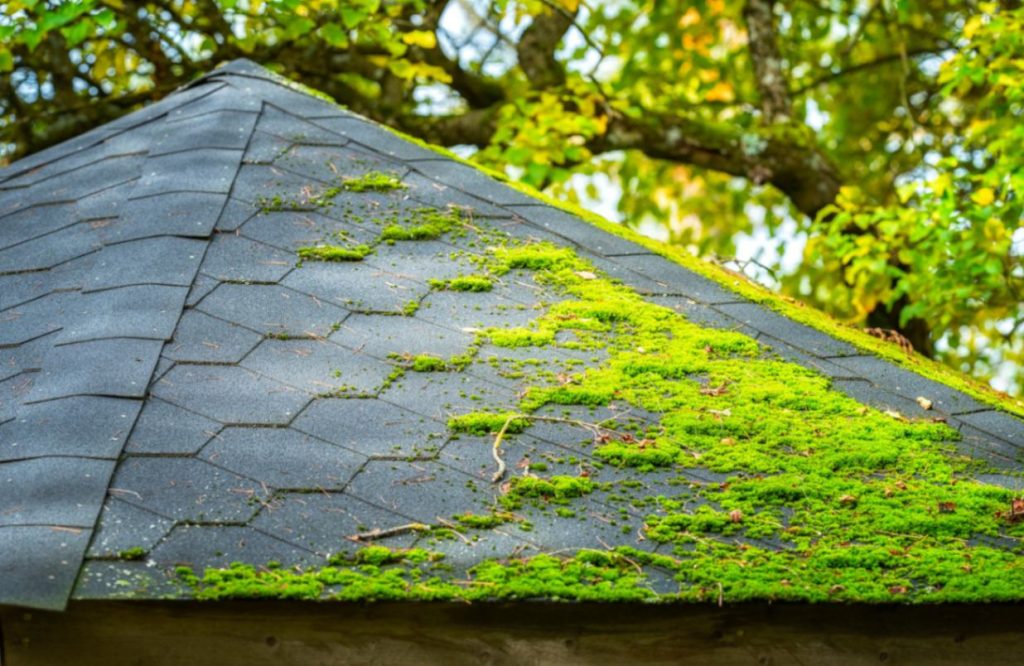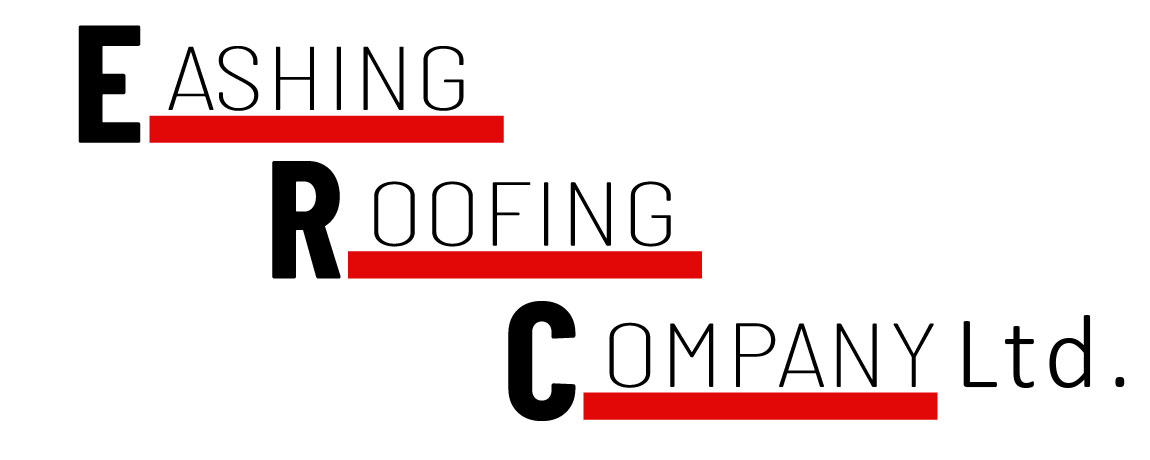What Homeowners Should Know About Roof Algae, Moss, and Lichen
As a homeowner, it’s essential to understand the implications of roof algae, moss, and lichen. These contaminants can compromise your roof’s integrity and lead to costly repairs if neglected. Recognising their presence and knowing the potential dangers is the first step in protecting your investment. But how can you identify these issues before they escalate, and what steps can you take to prevent them? Let’s explore the details you need to know.

Key Takeaways
Algae, moss, and lichen thrive in shaded, moist areas, leading to potential roof damage and structural issues.
Algae appears as dark streaks, while moss manifests as green tufts, and lichen has a crusty texture.
Regular inspections and proper drainage can help prevent and identify roof contaminants early.
Use eco-friendly cleaning methods and protective gear when addressing roof contaminants to ensure safety.
Neglecting roof maintenance can reduce property value and curb appeal significantly; timely action is crucial.
Understanding Roof Algae, Moss, and Lichen
While you may appreciate the natural beauty of your home’s surroundings, it’s vital to understand the potential impact of roof algae, moss, and lichen on your roofing system.
These organisms thrive within the roof ecosystem, often flourishing in specific growth conditions such as shaded areas with high moisture levels. Algae, typically appearing as dark streaks, can degrade roofing materials over time, while moss retains water, potentially leading to structural damage.
Lichen, a combination of algae and fungi, can further compromise your roof’s integrity by creating a barrier that prevents moisture evaporation. Recognising the significance of these organisms is essential for maintaining your roof’s health and longevity.
Proper management strategies can help mitigate their effects and protect your investment.
How to Identify Algae, Moss, and Lichen on Your Roof
How can you effectively identify algae, moss, and lichen on your roof? Start by examining your roof’s surface for discolouration.
Algae typically appears as dark streaks, often green or black, especially on shaded areas. For algae identification tips, check for any slimy patches that may indicate moisture retention.
Next, look for moss growth signs, such as green tufts or clumps that thrive in damp conditions. Moss often holds moisture, making it a potential concern.
Finally, identify lichen by its crusty texture and varied colours, which can range from grey to yellow.
Regular inspections can help you catch these organisms early, ensuring your roof remains in prime condition.
The Dangers of Ignoring Roof Contaminants
Ignoring roof contaminants like algae, moss, and lichen can lead to significant structural and aesthetic issues.
These organisms retain moisture, promoting rot and deterioration of roofing materials, which ultimately shortens your roof lifespan. As the contaminants spread, they can also cause shingle damage, leading to leaks and costly repairs.
Additionally, a roof covered in these growths can detract from your property’s aesthetics, making it appear neglected and lowering its curb appeal. This can affect your home’s overall value if you plan to sell or rent.
By addressing these contaminants promptly, you protect both your roof’s integrity and your property’s appearance, ensuring a longer-lasting investment.
Don’t underestimate the importance of regular maintenance in preserving your home’s condition.
Common Types of Roof Algae, Moss, and Lichen
When it comes to roof contaminants, understanding the common types of algae, moss, and lichen is essential for effective prevention and treatment.
Algae types commonly found on roofs include Gloeocapsa magma, which appears as dark streaks, and Nostoc, which can create slimy patches. These algae thrive in moist environments and can lead to damage over time.
Moss characteristics include a soft, green appearance and a tendency to retain moisture, which can promote further growth of other contaminants. It often appears in shaded areas and can lift shingles, compromising your roof’s integrity.
Lichen, a symbiotic organism, combines fungi and algae, often forming crusty patches. Recognising these contaminants helps you take proactive measures for your roof’s health.
Factors Contributing to Roof Growth Issues
Several factors contribute to the growth of algae, moss, and lichen on roofs, making it important to understand your environment and roofing materials.
High humidity levels create an ideal breeding ground for these organisms, as they thrive in moist conditions. If you live in an area with consistent rainfall or high humidity, you’ll likely see increased growth on your roof.
Sunlight exposure also plays an essential role; roofs that receive limited sunlight often retain moisture longer, allowing algae and moss to flourish.
Additionally, the type of roofing materials used can either promote or inhibit growth. Darker shingles absorb more heat, potentially leading to higher humidity levels beneath them, while lighter materials may discourage growth by reflecting sunlight.
Preventative Measures to Keep Your Roof Clean
To maintain a clean roof and prevent the growth of algae, moss, and lichen, you should implement a few key strategies.
Regular Roof Inspections
Regular roof inspections allow you to identify potential issues early, while proper drainage systems help direct water away from your roof.
Additionally, consider using algae-resistant roofing materials to improve your roof’s longevity and cleanliness.
Proper Drainage Systems
Maintaining a clean roof goes beyond regular inspections; it also involves implementing proper drainage systems to prevent the accumulation of water, debris, and organic growth.
A well-thought-out drainage system design is essential for effective runoff management. Confirm that gutters and downpipes are appropriately sized and positioned to direct water away from your roof and foundation. Regularly clean these components to avoid blockages that can lead to water pooling.
Additionally, consider installing a roof with a slight slope to facilitate drainage. By prioritising these measures, you reduce the risk of algae, moss, and lichen growth, prolonging the lifespan of your roof while maintaining its aesthetic appeal.
Proper drainage is key to a healthy roofing system.
Algae-Resistant Roofing Materials
While many homeowners focus on cleaning their roofs to combat algae, moss, and lichen, selecting algae-resistant roofing materials offers a proactive solution.
Algae-resistant tiles, often treated with copper or zinc, inhibit the growth of these unwanted organisms. This not only keeps your roof looking pristine but also extends its lifespan by preventing damage caused by accumulated debris and moisture.
The roofing material benefits of using algae-resistant options include reduced maintenance costs and improved curb appeal.
By investing in these specialised materials, you’ll save time and money in the long run, as you’ll likely avoid frequent cleanings and repairs.
Ultimately, choosing algae-resistant roofing is a smart decision for maintaining a healthy, attractive roof.
Effective Treatment Methods for Roof Contaminants
To effectively treat roof contaminants like algae, moss, and lichen, you’ll want to contemplate chemical cleaning solutions customised for your roofing material.
Additionally, establishing preventative maintenance strategies can help minimise future growth and prolong your roof’s lifespan.
Understanding these methods will empower you to maintain a clean and functional roof.
Chemical Cleaning Solutions
Chemical cleaning solutions provide effective treatment methods for tackling roof contaminants like algae, moss, and lichen. These solutions typically contain sodium hypochlorite or potassium hydroxide, which efficiently break down organic material.
When applying these chemicals, it’s vital to prioritise cleaning safety. Always wear protective gear, including gloves and goggles, to shield yourself from harmful exposure. Additionally, guarantee proper ventilation in the area to minimise inhalation risks.
Consider the environmental impact of your chosen cleaning method. Opt for eco-friendly alternatives that minimise harm to surrounding vegetation and wildlife.
Before proceeding, test a small area to confirm your roof’s material can withstand the solution. With careful application, chemical cleaning can restore your roof’s integrity while effectively combating stubborn contaminants.
Preventative Maintenance Strategies
Preventative maintenance strategies are essential for homeowners looking to extend the lifespan of their roofs and minimise the growth of algae, moss, and lichen.
Start with routine inspections to identify any early signs of contamination. Regularly check for debris, as it can trap moisture and promote growth.
Implement preventative cleaning techniques, such as using a garden hose to gently wash away dirt and organic materials. Consider applying a biocide treatment specifically designed to inhibit algae and moss growth.
Additionally, guarantee proper roof ventilation to reduce moisture buildup, which encourages these contaminants.
When to Call in a Professional
While many homeowners can tackle minor cases of roof algae, moss, and lichen, certain situations clearly warrant the expertise of a professional.
If you notice extensive growth that covers a large area or if the algae, moss, and lichen are causing structural damage, it’s time to call in professional services.
Additionally, if your roof’s slope is steep or if it’s difficult to access safely, hiring a professional guarantees both effective removal and your safety.
Roof maintenance is essential, and professionals use specialised equipment and techniques to mitigate further damage.
They can also provide guidance on preventive measures to keep your roof healthy.
When in doubt, seeking expert help can save you time and money in the long run.
Maintenance Tips for Long-Lasting Roof Health
To guarantee your roof remains in top condition, establish a regular cleaning schedule to remove algae, moss, and lichen buildup.
Additionally, conduct proper roof inspections to identify any potential issues early on.
These proactive measures can greatly extend the lifespan of your roofing system.
Regular Cleaning Schedule
A regular cleaning schedule is crucial for maintaining the longevity and health of your roof. You should aim to perform roof cleaning at least once a year, ideally during the spring or autumn, to remove algae, moss, and lichen buildup.
This maintenance frequency helps prevent moisture retention and damage caused by these organisms. When cleaning, use a gentle approach with appropriate cleaning solutions to avoid damaging roofing materials.
Additionally, inspect your roof after heavy storms or high winds, as debris can accumulate and promote growth. By adhering to this schedule, you can extend your roof’s lifespan and preserve its aesthetic appeal.
Consistent care guarantees your home remains protected from potential leaks and structural issues.
Proper Roof Inspections
Proper roof inspections are essential for maintaining the integrity of your home, as they help identify potential issues before they escalate into costly repairs.
Implement effective roof inspection techniques, such as visual assessments and moisture detection, to pinpoint areas prone to algae, moss, and lichen growth. Use a seasonal inspection checklist to guide your evaluations, ensuring you cover critical aspects like flashing, tiles, and gutters.
Inspect your roof at least twice a year, ideally in spring and autumn, to catch any emerging problems. Don’t forget to document your findings for future reference.
The Impact of Roof Contaminants on Home Value
While many homeowners may overlook the effects of roof contaminants like algae, moss, and lichen, these issues can greatly impact your property’s value.
Neglecting roof maintenance can lead to structural damage, which potential buyers will definitely notice. Contaminants not only diminish your home’s curb appeal but can also signal underlying problems, reducing buyer interest and offers.
A well-maintained roof can boost your home value considerably, while a compromised one may lead to costly repairs down the line. By addressing these contaminants promptly, you not only protect your investment but also improve the likelihood of a favourable appraisal when selling.
Prioritising roof maintenance is essential for preserving your home’s appearance and overall market value.
Frequently Asked Questions
Can Roof Contaminants Affect My Home’s Energy Efficiency?
Yes, roof contaminants can greatly affect your home’s energy efficiency. Regular roof maintenance is essential to prevent buildup, which can insulate improperly, leading to increased energy costs and reduced overall performance of your heating and cooling systems.
What Are the Long-Term Effects of Untreated Roof Algae?
If you leave roof algae untreated, it can lead to significant roof deterioration over time. This not only compromises your home’s structural integrity but can also decrease your property value, making timely maintenance essential.
